Designer Dot Picture
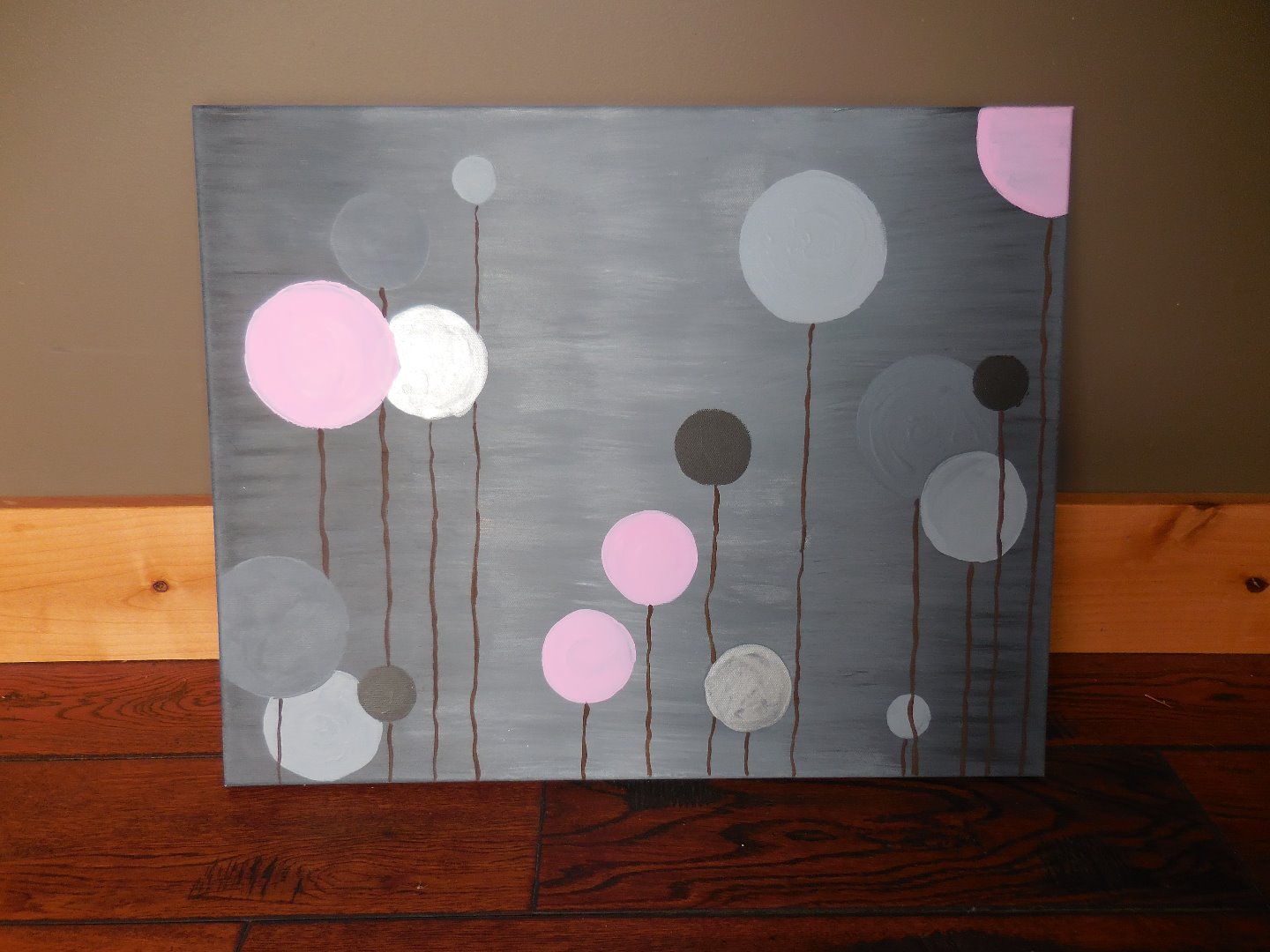
If you need a little something to brighten up a space, this might be your answer. You can make this in any combination of colors that suite you, but I will show you a few combinations.
Get Your Supplies
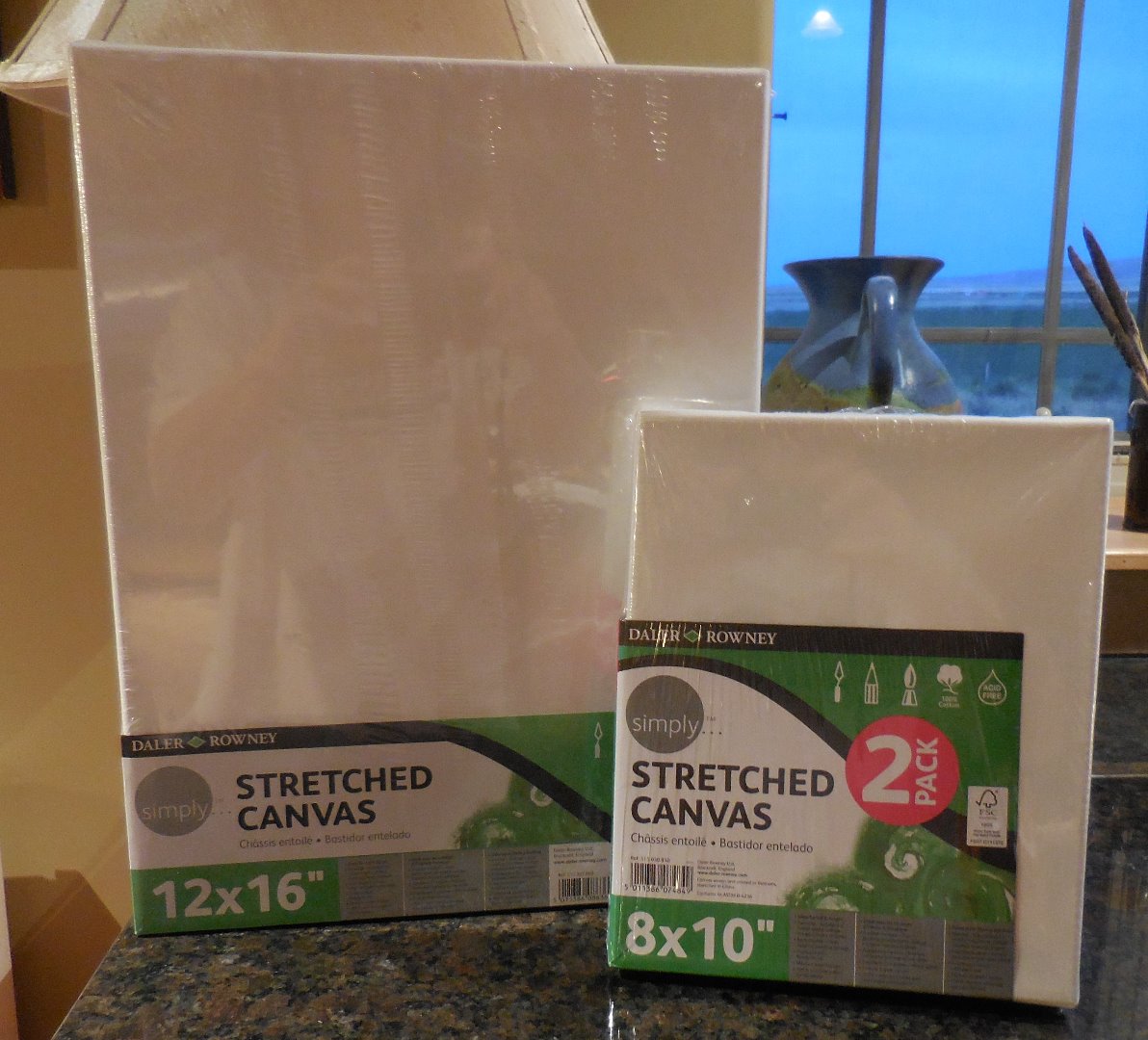
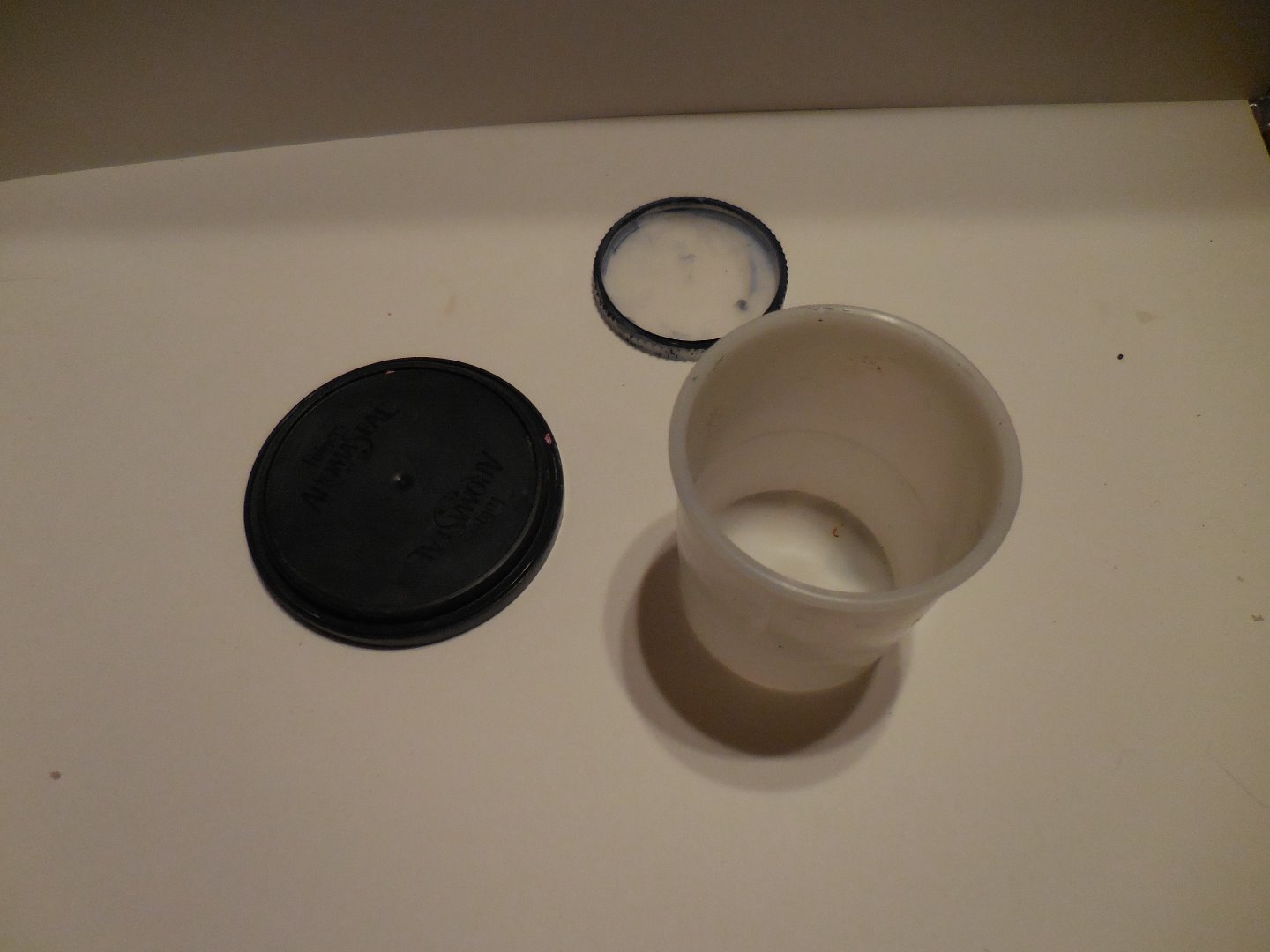
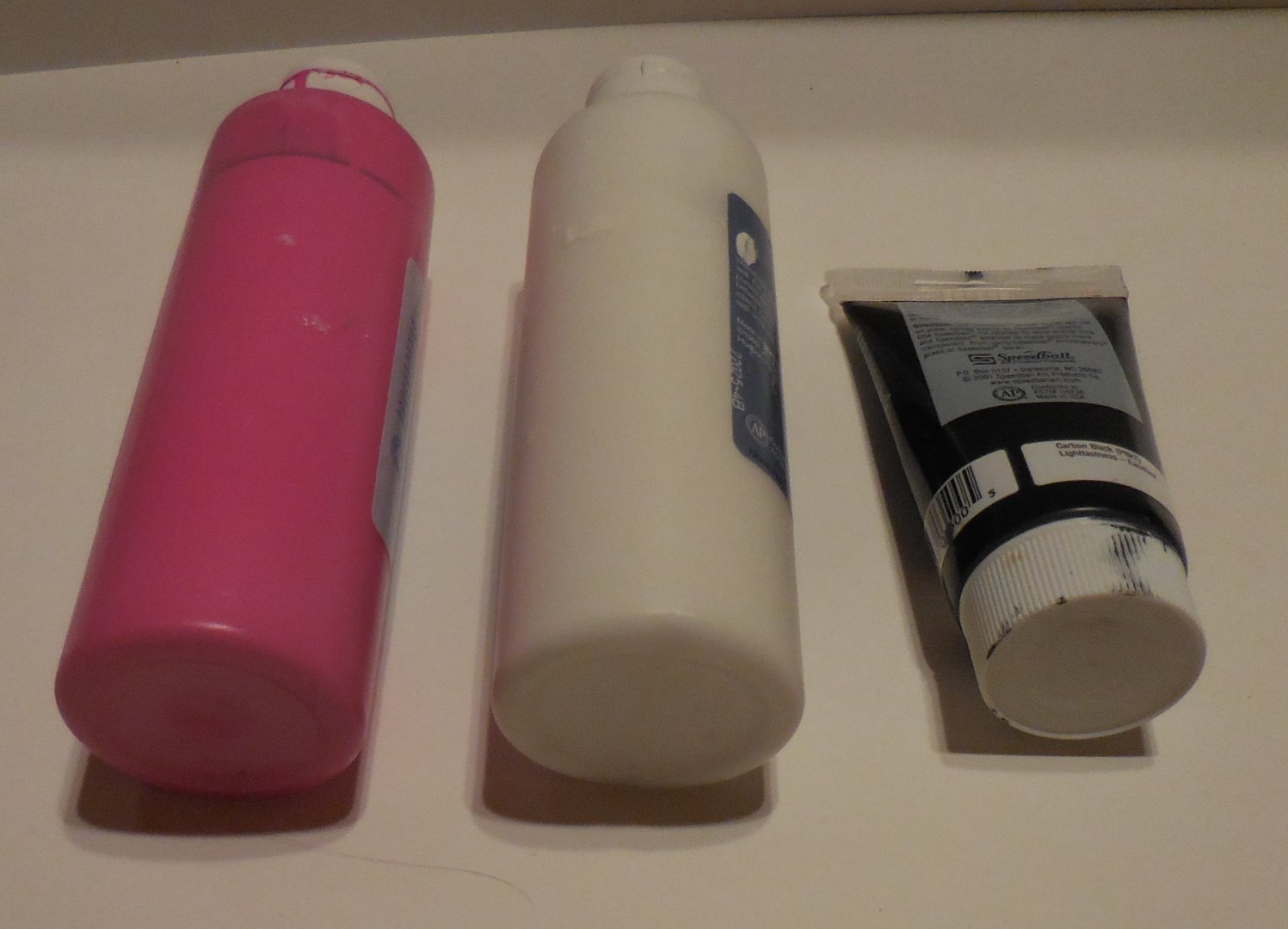
Get your supplies
- A canvas of the appropriate size
- White latex paint
- Latex paint for your background color (I am using black)
- 3 complimentary latex paint colors for your dots (I used pink, grey, and black for one and black, grey, blue for another)
- Foam brushes
- Small plastic containers for mixing paint in (you can use just a spot on paper, but I find the plastic containers much easier to use if I have to stop midway through the project
- Assorted round objects of differing sizes to use as circle guides
Add the White Strip to Your Background
The background color and run from light to dark horizontally, diagonally, vertically, or even radiate out from a spot of your choosing. For this sample, I am moving vertically from the center out toward the edges.
Grab
- Mixing paint dish
- foam brush
- the white paint
- the background color paint
- the canvas
It is easier to make paint darker than to make it lighter when mixing it, so we start with the white
Put a large amount of the white in your plastic mix dish. Put about 3 times as much white as you think it will take to cover the entire background of your canvas.
Paint a small strip of white down the center of the canvas moving your brush from side to side. (if you are radiating horizontally instead, make your brush strokes go up and down)
It is difficult to see in a picture on a white canvas, but you will see it on your project. Make your white strip cover about half the canvas. Having this paint will make the subsequent colors flow better on the canvas.
Slowly Add Darker Strips to the Canvas, Working Your Way to the Edges
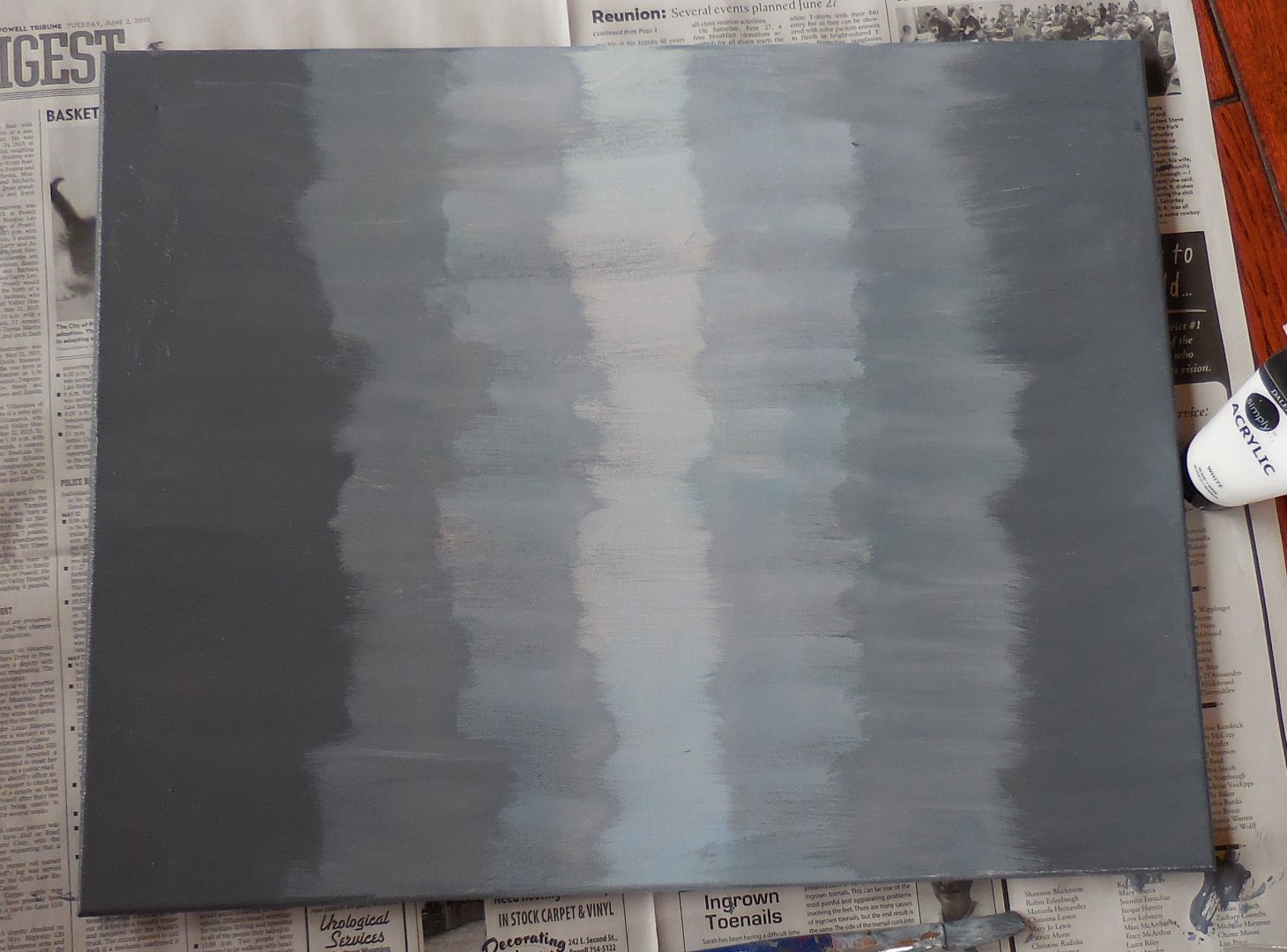
Take a small amount of the black and put it in the white and
mix well.
Spread this light grey from almost the center out toward the edges.
Repeat this step a lot. For a really smooth look, add paint and strips of color in many small steps.
I only did a few in this example, but the more color changes you make the smoother the transition looks in the end.
Blend Your Transitions
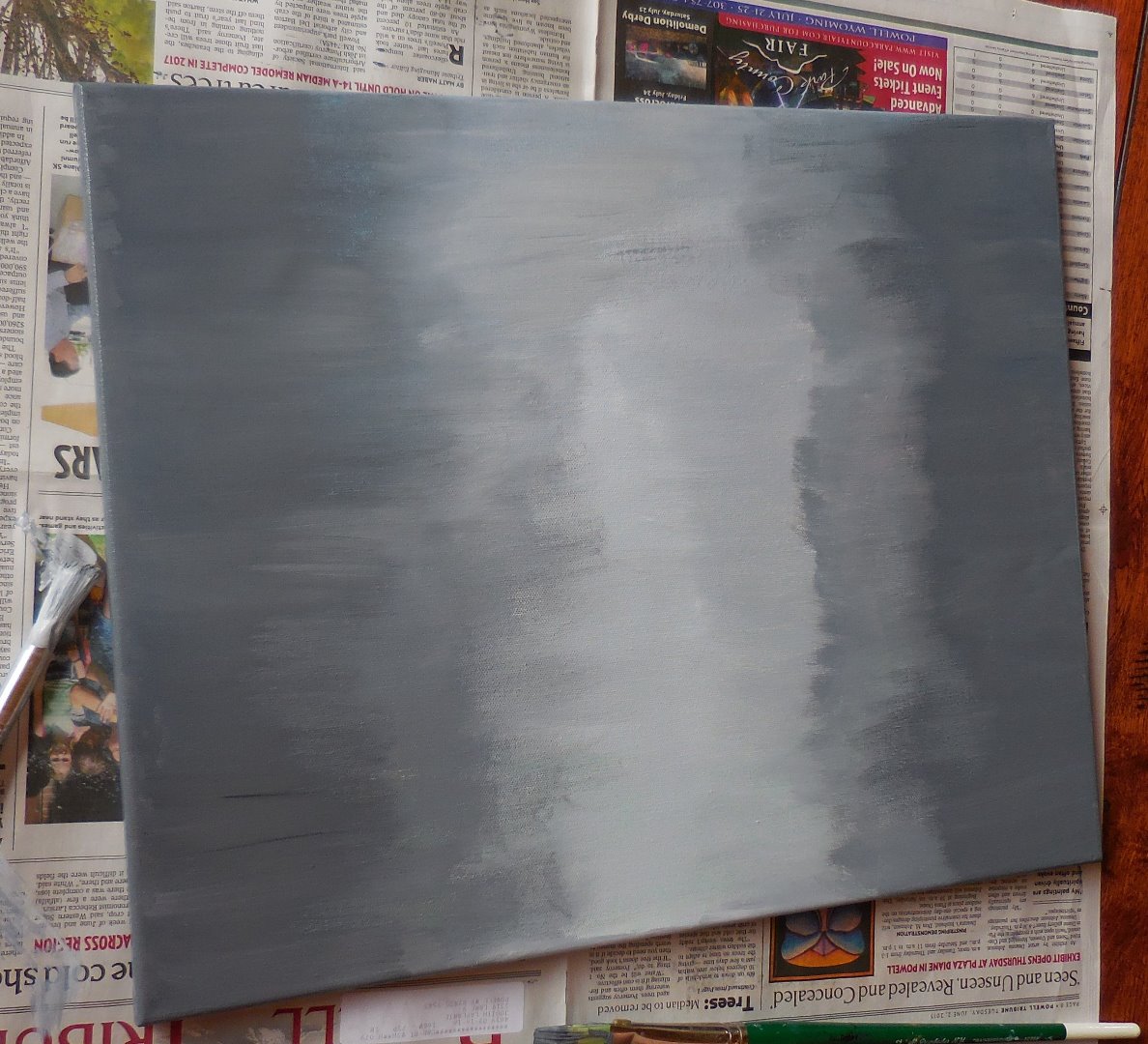
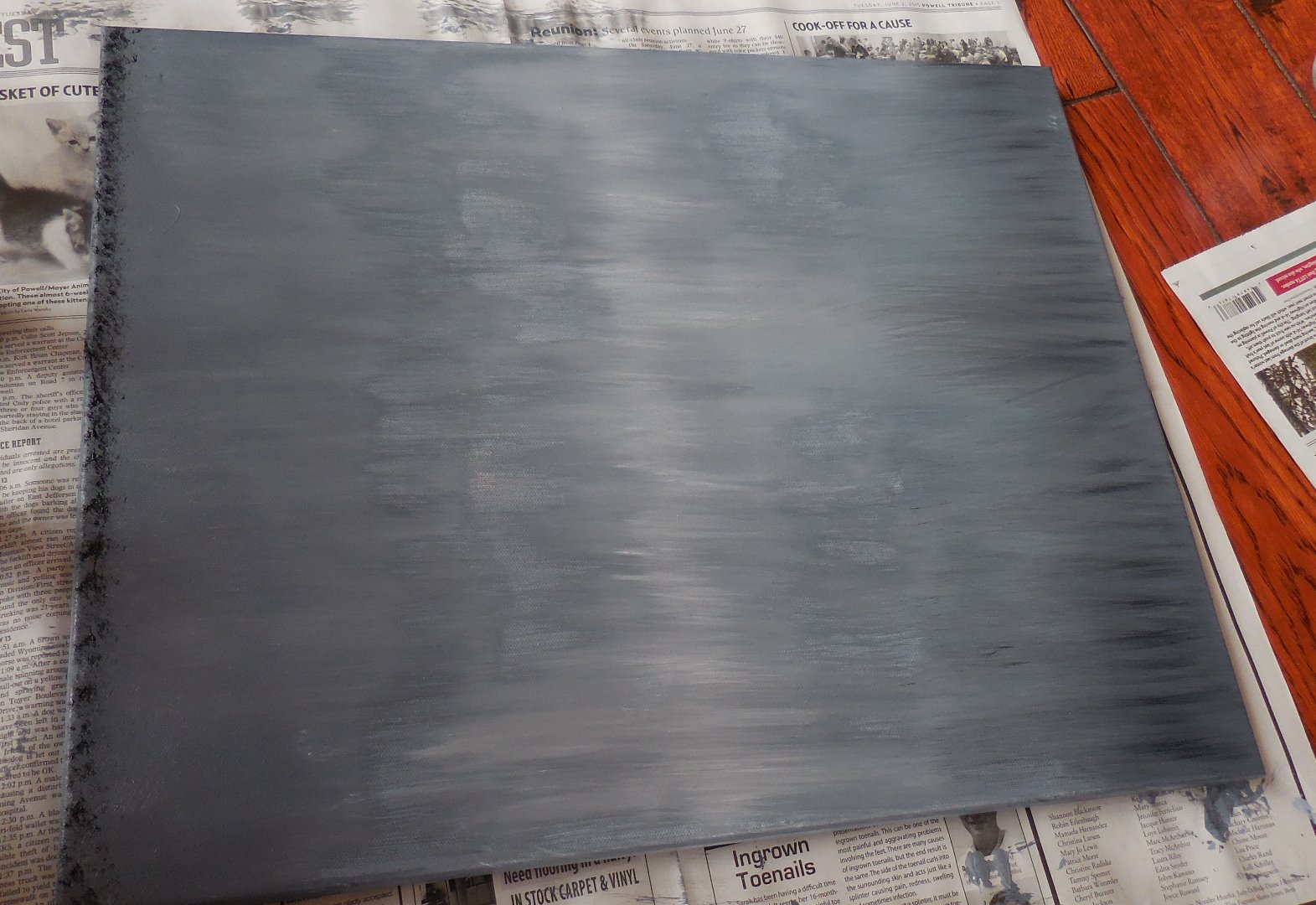
Blend your transitions
If you are using an acrylic paint and you work fast enough so it does not dry, simply dip your brush into a little bit of water and begin to run your brush from the center of the canvas to the edge. This will slowly begin to soften the transitions between the colors
Draw Some "Dots"
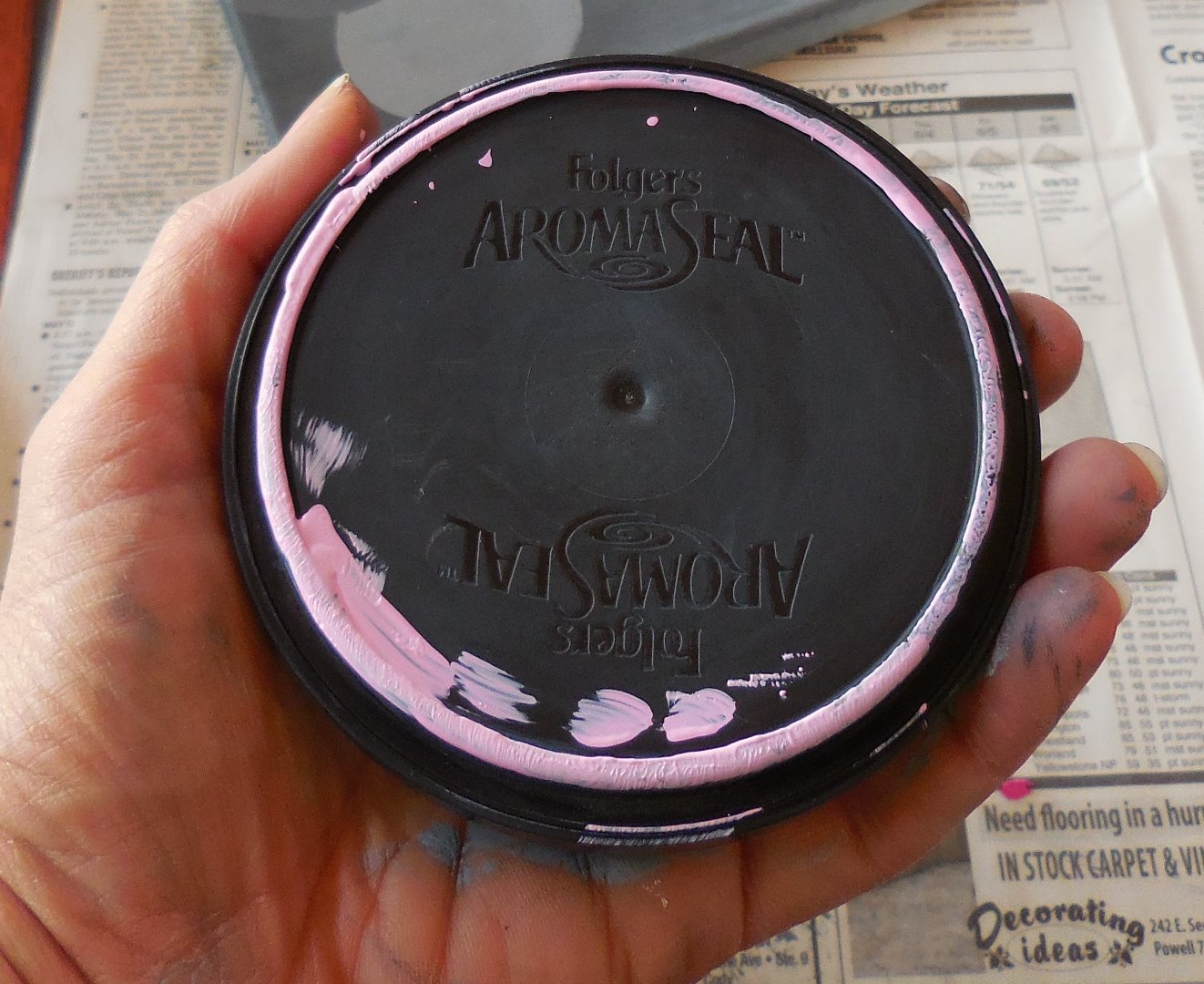
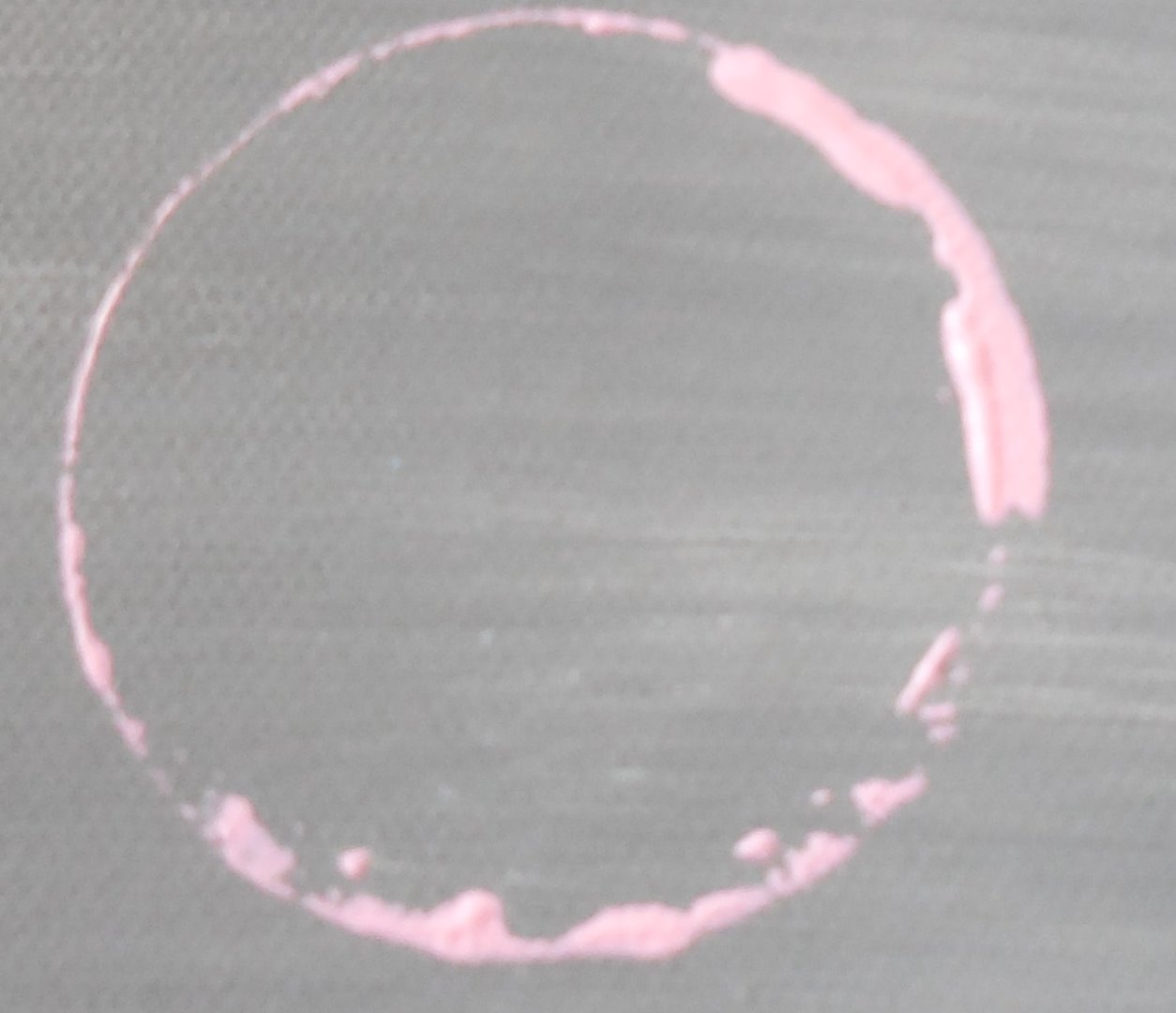
Start with your lightest color out of your complimentary color.
Choose a selection of round shapes to use as your circle template.
Paint the edges of your circle template with this color and place it down on you canvas so that the paint can be left begin and give you a circle. Of course you can freehand the circle on your canvas if you want a more handmade look to your piece.
Put a variety of sizes these circles all over your canvas.
Look for balance and appeal, but don’t put too many, as you are going to add more of other colors.
repeat this step over and over with each of the colors you have chosen to use for your dots. You can use as many as you want or as few as you want.
Fill in the Dots
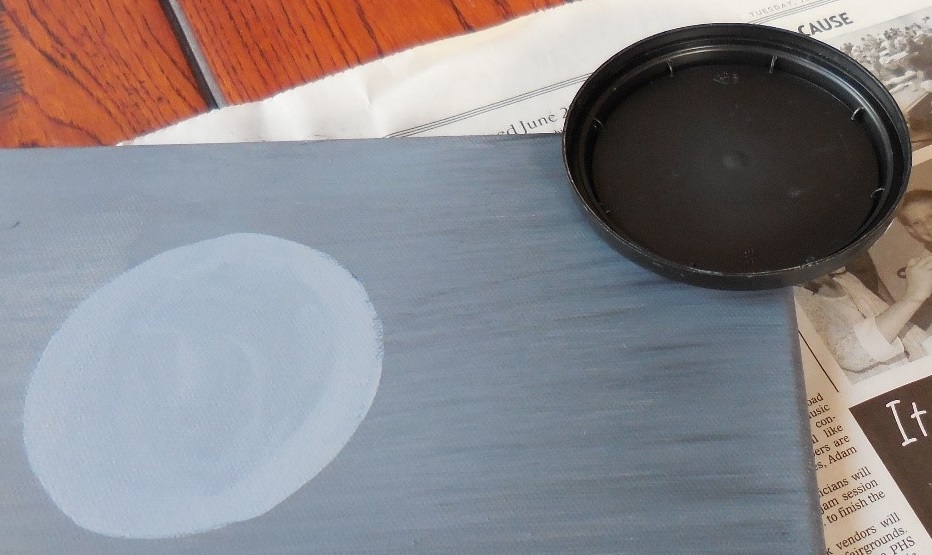
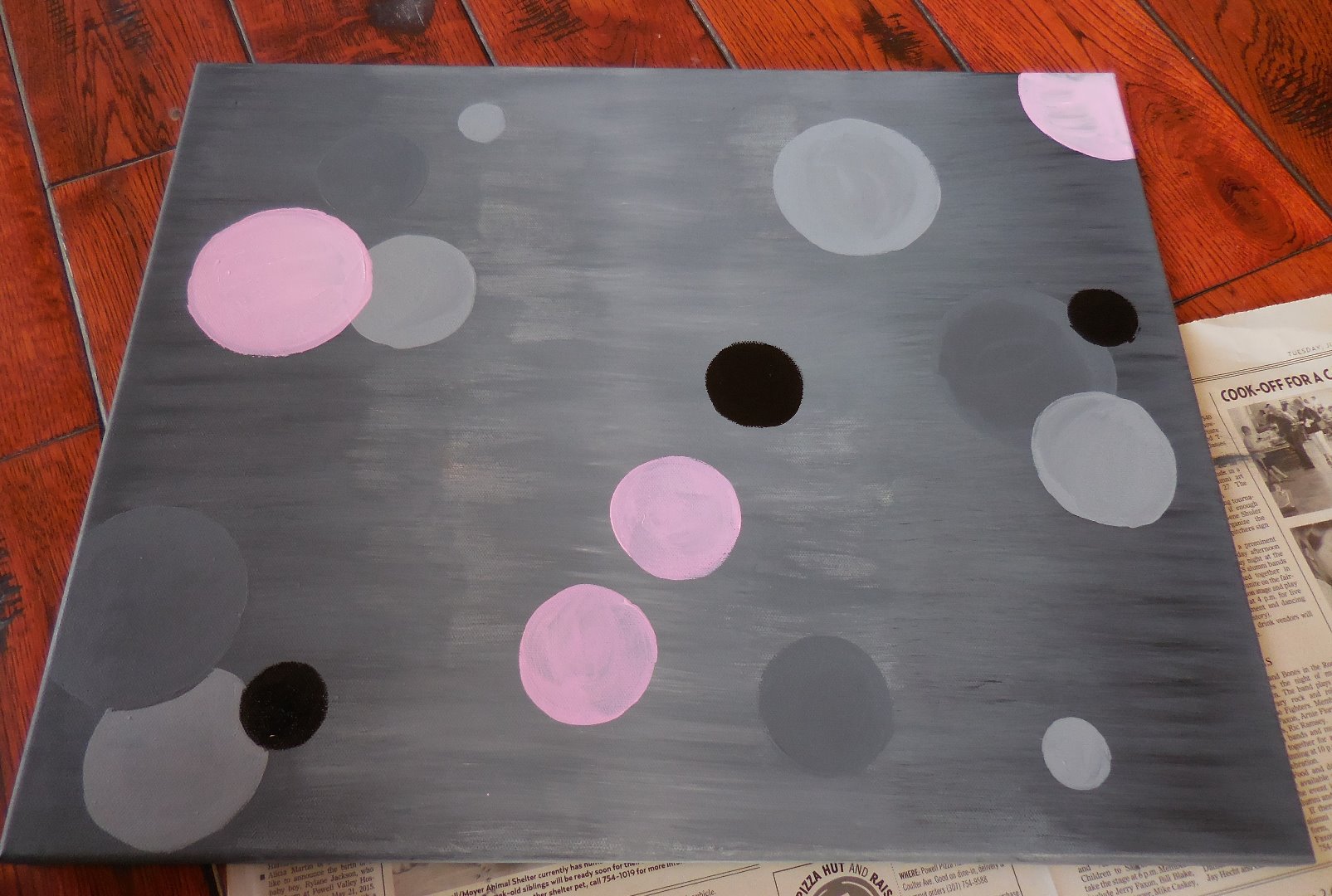
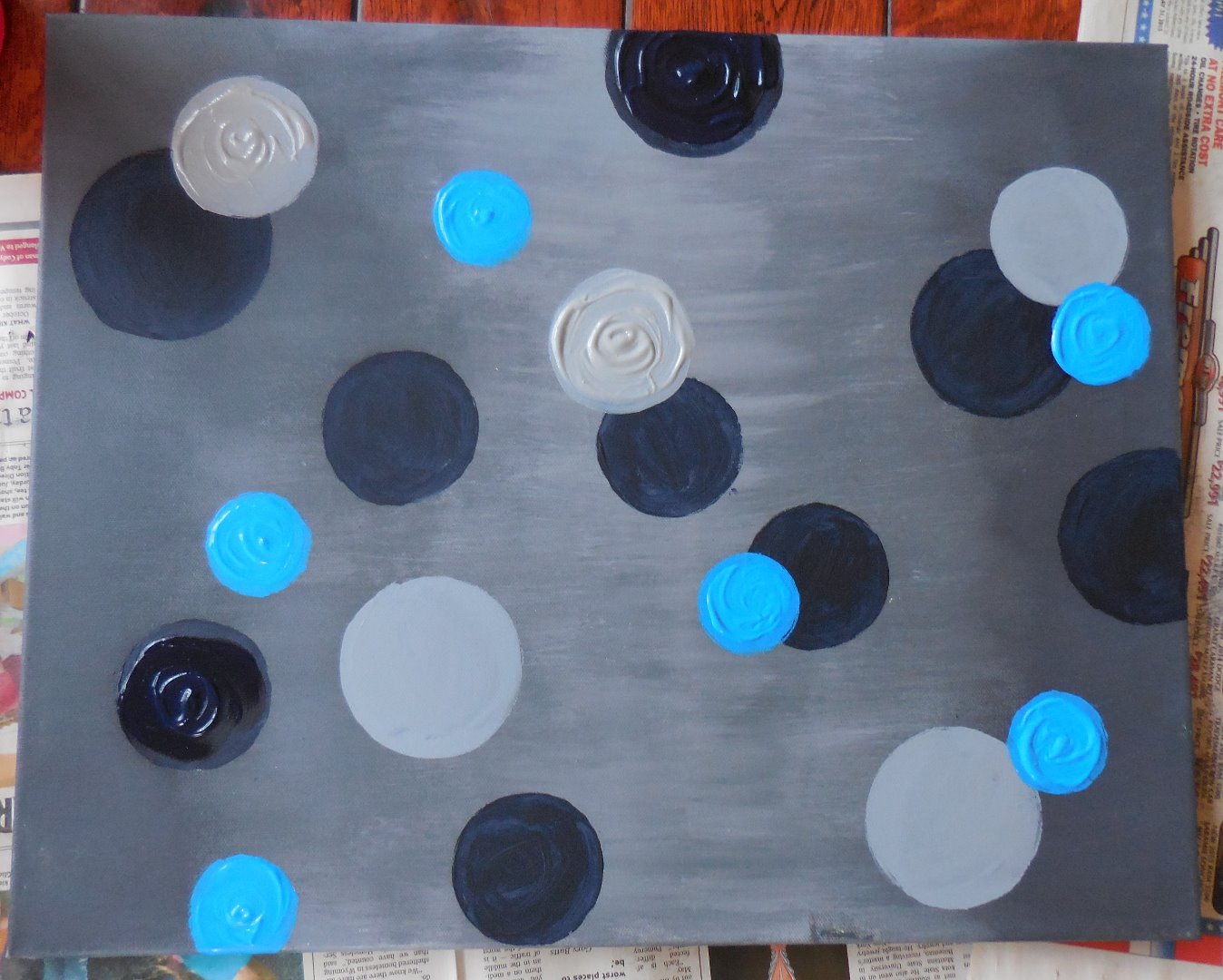
Fill in the dots
TIPS
- Wait to fill in the circles until you are all done with all the colors.
- This allows you to decide which circle is on top of the others
- Be sure to have some circles overlap others
- Be sure to have some circles run off the edge of your canvas
- If you are not going to frame your canvas, be sure to bring the color around the edge of your canvas
Add the "Stems"
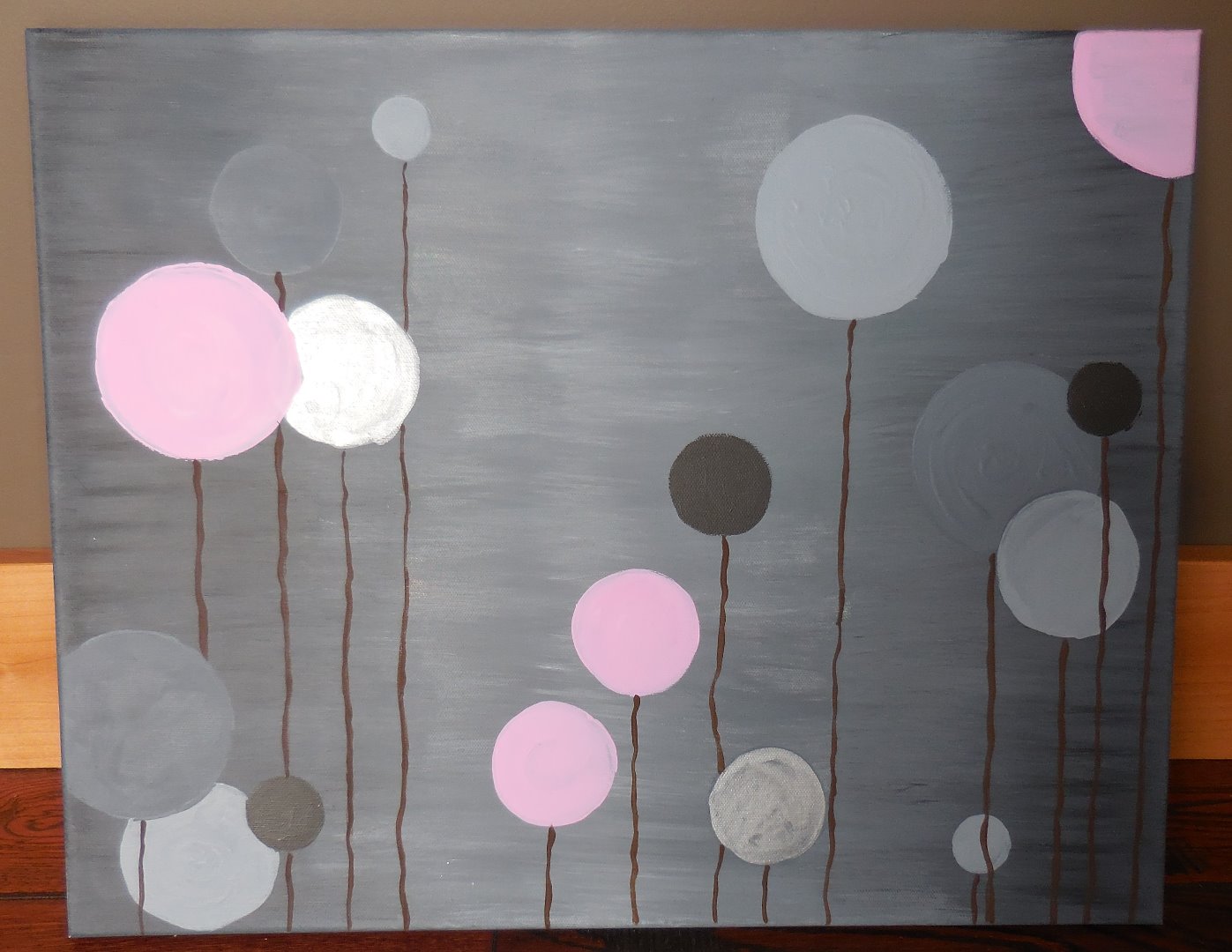
Draw in the stems to your picture.
It is easier to make your stems thicker, so make them very thin to begin with